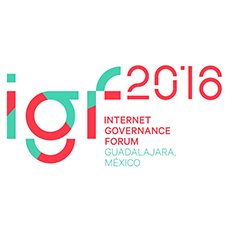Markets, communities and public policies for access and HR
8 Dec 2016 11:15h - 12:45h
Event report
[Read more session reports and live updates from the 11th Internet Governance Forum]
The session focused on the promotion of Internet access policies by innovating regulatory frameworks that address both the access problem and the human rights dimension. The discussion was in line with the recommendations from the Final Compilation document for Connecting the Next Billion, which stresses the need for an enabling environment, where ‘future connectivity efforts need to ensure that those coming online have access to the entire global and open Internet. Access should be universal, equitable, secure, affordable, and high-quality on the basis of human rights…’.
The discussion was moderated by Ms Paula Vargas, CETYS (Center for Technology and Society) of the University of San Andres, Argentina.
Ms Alison Gillwald, Research ICT Africa, commented on the best practices in developing countries and on the development of policy and infrastructure for connecting the unconnected. She highlighted that public access is still an alternative for communities, as in many places t a lot a people do not have the opportunity to pay for an Internet connection. ‘We need to create a proper environment that will allow communities to connect and operate their networks themselves’. said Gillwald.
Mr Miguel Ignacio Estrada, independent consultant from Argentina, listed several initiatives run by the Argentinian government to connect 10 million citizens who are not yet online. He mentioned the Internet Federal Plan, Conectar Igualdad, and a Digital Inclusion Plan.
Ms Helani Galpaya, LIRNE ASIA, explained that in South Asia the markets have reduced prices immensely because of competition. However, she pointed out that only between 20 and 30% of the population is online. For her, that means that even though the price barrier was crossed, there are still many issues to solve.
Mr Fernando López, ASIET, underlined that achieving connectivity does not necessarily mean reaching affordability. He pointed out the importance of building a framework of trust. ‘We believe that investment and competition in the whole digital ecosystem is necessary. And it has to be done in a regulatory framework that considers the same opportunities to compete in different levels or different areas of the digital ecosystem.’
Mr Sebastián Bellagamba, Internet Society, started by inviting the audience to check out the Society’s report Policy framework for enabling Internet access available on https://www.internetsociety.org/doc/policy-framework-enabling-internet-access
He highlighted two main issues: how to connect the next billion and how can we solve the problem of trust for those who are already connected. ‘We have to concentrate on the benefits that the Internet brings to our people and how we can get this opportunity right in order to move forward and to prosper as a society’, said Bellagamba.
Ms Siena Perry, APNIC, mentioned the situation of connectivity in Pacific nations in which there are examples of some islands where connectivity is provided by submarine cables, others that rely on satellite connectivity – which is more expensive and slower – and some islands that have no connectivity at all. Perry noted the importance of the human factor in the development of the Internet and its close relation with infrastructure.
Mr Juan Ortiz Freuler, independent researcher from Mexico, started by mentioning the Mexican plan that includes universal access as a right and has three objectives: improving coverage and quality of public services, reducing the digital divide, and saving public resources by aggregating the demand for service from all levels of government. As a result of his research, he pointed out that even though the plan connected thousands of localities covering approximately 84% of the population of Mexico, there are still 170 localities of between 50 and 500 habitants that are not yet connected.
by Agustina Callegari, Internet Society Youth Obsevatory
Related topics
Related event

